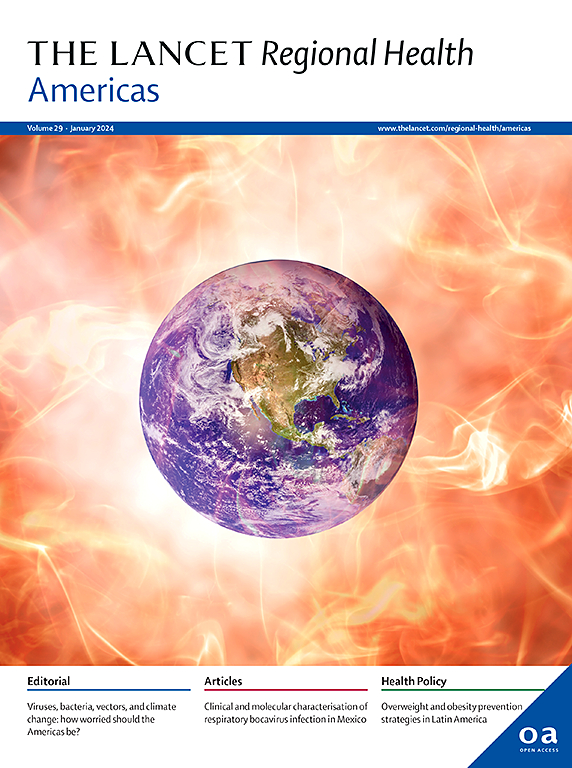Brain and brain blood vessels histological description in autopsies of fetuses/neonates born to mothers with hypertension during pregnancy. A case–control study
IF 7
Q1 HEALTH CARE SCIENCES & SERVICES
引用次数: 0
Abstract
Background
Children born to women with hypertension during pregnancy have a two to threefold increased risk of developing cognitive disorders compared to children born to women without hypertension. However, structural changes in the central nervous system of these children remain poorly understood. We aim to compare the brain histological findings from autopsies of neonates and fetuses born to women with and without hypertension during pregnancy.
Methods
This retrospective case–control study includes brain histological samples from autopsies of neonates and fetuses born to women with (n = 22) and without (n = 15) hypertension during pregnancy, obtained from biobanks associated with the University Hospital San Ignacio (HUSI), Bogotá, Colombia, between 2007 and 2022. Hypertension during pregnancy was diagnosed following American College of Obstetricians and Gynecologists (ACOG) guidelines. Matched criteria included similar maternal pre-pregnancy morbidity, gestational ages at delivery, fetal sex, and availability of similar histological samples of fetal/neonatal brains. Clinical data were recorded, and two diagnosed-blinded pathologists analyzed all slides.
Findings
Ninety-three percent (14/15) of fetuses/neonates born to women with hypertension during pregnancy were born after preeclamptic pregnancies. Histological findings were described for the frontotemporal cortex (97%, 36/37) and meninges (81%, 30/37). Fetuses/neonates born to women with hypertension during pregnancy were smaller (p = 0.030), had a lower gestational age at death (p = 0.047), and were more frequently stillborn. Autopsy records revealed higher maternal vascular malperfusion in women with hypertension during pregnancy (p < 0.0001). Subarachnoid hemorrhage was more common in fetuses/neonates born to women with hypertension during pregnancy (p = 0.036). Other frequent findings included neuropil edema, congested meninges, hypoxic-ischemic encephalopathy, subdural hematoma, venous sinus thrombosis, hemoventricle, and necrotic foci. However, no significant endothelial or vascular wall changes were noted. “Prominent and congested” capillaries were observed only in fetuses/neonates born to women without hypertension.
Interpretation
The findings suggest increased cerebrovascular vulnerability in fetuses and neonates exposed to maternal hypertension during pregnancy, with a higher incidence of subarachnoid hemorrhage. While no vascular wall changes were identified, fewer brain capillary alterations were noted in those born to women with hypertension during pregnancy.
Funding
Fondecyt 1200250, 1240295.
妊娠期高血压母亲所生胎儿/新生儿尸检中的大脑和脑血管组织学描述。病例对照研究
背景妊娠期高血压妇女所生子女患认知障碍的风险是无高血压妇女所生子女的两到三倍。然而,人们对这些儿童中枢神经系统的结构变化仍然知之甚少。这项回顾性病例对照研究包括妊娠期高血压妇女(22 例)和非妊娠期高血压妇女(15 例)所生新生儿和胎儿的尸检脑组织学样本,这些样本来自哥伦比亚波哥大圣伊格纳西奥大学医院(HUSI)的相关生物库,采集时间为 2007 年至 2022 年。妊娠期高血压根据美国妇产科医师学会(ACOG)指南进行诊断。匹配标准包括相似的孕产妇孕前发病率、分娩时的妊娠年龄、胎儿性别以及相似的胎儿/新生儿大脑组织学样本。研究结果93%(14/15)的妊娠期高血压妇女所生的胎儿/新生儿是在先兆子痫妊娠后出生的。组织学检查结果显示,额颞叶皮层(97%,36/37)和脑膜(81%,30/37)有异常。妊娠期高血压妇女所生的胎儿/新生儿个头较小(p = 0.030),死亡时胎龄较低(p = 0.047),死胎率较高。尸检记录显示,妊娠期高血压妇女的母体血管灌注不良程度更高(p < 0.0001)。妊娠期高血压妇女所生的胎儿/新生儿更常见蛛网膜下腔出血(p = 0.036)。其他常見的發現包括神經膜水腫、腦膜充血、缺氧缺血性腦病、硬膜下血腫、靜脈竇血栓形成、血腦室及壞死灶。但未发现明显的内皮或血管壁变化。"解释:研究结果表明,妊娠期母体患高血压的胎儿和新生儿脑血管脆弱性增加,蛛网膜下腔出血的发生率较高。虽然没有发现血管壁的变化,但妊娠期高血压妇女所生的胎儿和新生儿的脑毛细血管改变较少。
本文章由计算机程序翻译,如有差异,请以英文原文为准。
求助全文
约1分钟内获得全文
求助全文
来源期刊

Lancet Regional Health-Americas
Multiple-
CiteScore
8.00
自引率
0.00%
发文量
0
期刊介绍:
The Lancet Regional Health – Americas, an open-access journal, contributes to The Lancet's global initiative by focusing on health-care quality and access in the Americas. It aims to advance clinical practice and health policy in the region, promoting better health outcomes. The journal publishes high-quality original research advocating change or shedding light on clinical practice and health policy. It welcomes submissions on various regional health topics, including infectious diseases, non-communicable diseases, child and adolescent health, maternal and reproductive health, emergency care, health policy, and health equity.
 求助内容:
求助内容: 应助结果提醒方式:
应助结果提醒方式:


